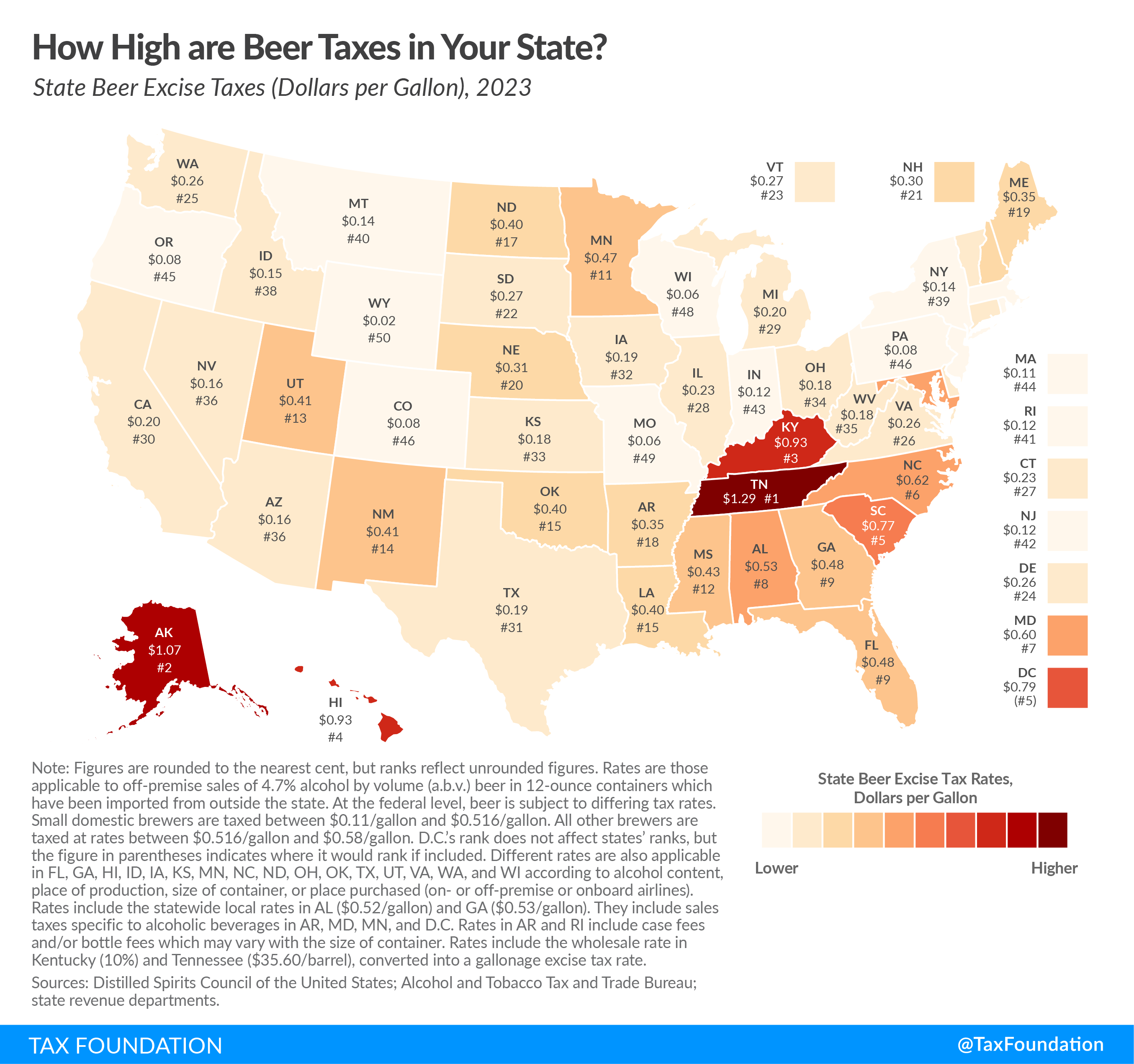Next week is the Fourth of July, a day we celebrate the birth of our nation. For many of us, the day is filled with patriotism, parades, time with friends and family, BBQ, and good beer. One might expect the price of beer to be driven primarily by the price of grain or hops. However, according to the Beer Institute, “Taxes are the single most expensive ingredient in beer, costing more than the labor and raw materials combined.” A report in 2005 found that all the different layers of taxation on production and distribution make up about 40 percent of the retail price for beer. What are all these beer taxes and where do they come from?
The United States collects an excise taxAn excise tax is a tax imposed on a specific good or activity. Excise taxes are commonly levied on cigarettes, alcoholic beverages, soda, gasoline, insurance premiums, amusement activities, and betting, and typically make up a relatively small and volatile portion of state and local and, to a lesser extent, federal tax collections. on beer at the federal level (ranging from $0.11 to $0.58 per gallon based on production, location, and quantity). At the state level, all 50 states and the District of Columbia collect their own taxes on fermented malt beverages. General sales taxes from state, and sometimes municipal governments, are tacked on after the prices of goods are subtotaled.
State excise taxes are often levied on the manufacturer, wholesaler, or retailer of beer. The states collect these excise taxes according to the quantity of beer sold (usually expressed as a rate of dollars per gallon). In these cases, consumers won’t see the taxA tax is a mandatory payment or charge collected by local, state, and national governments from individuals or businesses to cover the costs of general government services, goods, and activities. as an additional excise tax at checkout; the tax will already be priced into the retailer’s sales price.
In most states, the legal burden of remitting beer excise taxes falls on retailers, but some collection variations exist from state to state. For instance, some states levy taxes further up the supply chain by taxing brewers, importers, or other wholesalers at a percentage of revenue generated or at a fixed price per gallon, bottle, or case sold.
Many states also generate revenue by collecting license fees from beer distributors. States may also manipulate the price of beer by levying price controls—often state minimum prices for beer.
The accompanying map shows the state beer excise tax rates in all 50 states and the District of Columbia. Rates vary widely: as low as $0.02 per gallon in Wyoming and as high as $1.29 per gallon in Tennessee. Missouri and Wisconsin tie for second lowest at $0.06 per gallon. Tied for third lowest are Colorado, Pennsylvania, and Oregon at $0.08 per gallon. Alaska is second highest with its $1.07 per gallon tax, followed by Kentucky and Hawaii at $0.93 per gallon. Figures on the map below are rounded to the nearest cent, but ranks reflect unrounded figures.
The per-gallon rate shown on the map reflects the excise tax for a 4.7 percent alcohol by volume (ABV) beer in a 12-ounce container. Sixteen states have beer excise tax rates that vary based on alcohol content, place of production, size of container, or place purchased. For example, in Idaho, beer containing more than 4 percent ABV is considered “strong beer” and is taxed like wine at $0.45 per gallon. In Virginia, the per-bottle rate varies for bottles that exceed 7- and 12-ounce thresholds.
So, as you share a cold one with your friends and family, how does your state compare?
